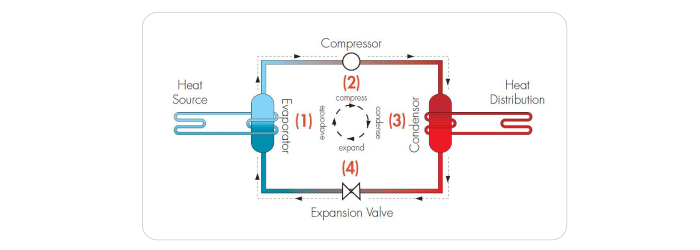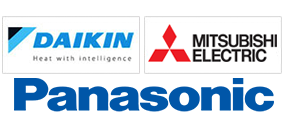How Heat Pumps Work
How Heat Pumps Work
Heat pumps do not generate heat but extract it from one body of air and transfer it to another. They use the same principle as your fridge, compressing gas and then allowing it to expand, extracting heat as it does so.
Even if the air outside is freezing, heat pumps can extract heat energy and transfer it inside to keep you warm. In summer the system works in reverse, extracting heat from indoors and transferring it outside leaving you comfortable and cool.
Heat Pump Heating Cycle

In the evaporator (outdoor unit), low-pressure, low-temperature liquid refrigerant absorbs heat from its surroundings and evaporates, converting to a gas state and absorbing energy as it does so (latent heat of evaporation).
It passes through the compressor where the low temperature gas is reduced in volume, resulting in a rise in both temperature and pressure.
As a heated and high-pressure gas, it passes through the condenser (indoor unit) where the gas condenses (latent heat of condensation) with a release of heat into the air surrounding the coil. A fan moves the warmed air away from the coil to distribute it throughout the indoor space.
Still under pressure, the cooled refrigerant, now in liquid state, passes through the metering device, where rapid expansion results in a reduction in pressure.
In the low-pressure, low-temperature state, the refrigerant flows back into the evaporator, and the cycle is repeated.
Heat Pump Air Conditioning Cooling Cycle
By reversing the above cycle a heat pump can extract the heat from the indoor air and transfer it to the outside air therby cooling your home or office space.
Heat pump benefits